About Yume Gardens
Yume Japanese Gardens & Museum of Tucson is the living expression of an ancient Japanese heritage, conceived with a unique vision and a sensitive healing purpose.
Yume’s buildings speak in the special accent of sukiya, a Japanese architectural style that is notably human, simple and open to nature. Our landscapes reflect a distinctive sensibility, too, primarily that of intimate, painting-like courtyard gardens.
The blending of these two traditions is unusual among Japanese gardens in North America, but it creates a serene frame for something else exceptional at Yume: a transformative program of therapeutic garden walks, shown in research and practice to gentle the mind, soothe the spirit and restore the heart in the face of mental distress. While you may step into Yume thinking only to enjoy its peacefulness and living beauty, you will also find in its interpretation of nature an invitation to cross a subtle threshold and reshape your inner landscape to achieve a renewed sense of emotional resilience and contentment.
Our Mission
“Transforming itself
every single day:
a cotton rose.”
M. Basho
“To immerse visitors in rich layers of Japanese culture and heritage through diverse garden landscape designs, production of traditional Japanese festivals, ceremonies, and performing arts, museum and art gallery exhibitions, and educational workshops and classes, as well as to provide a haven of greenery and tranquility for the Tucson community.”
Our Story
A surprising thread runs through Yume’s history – excavation.
Located in central Tucson, Arizona, Yume opened in January of 2013. We make our offices in a former house constructed in 1926 with a feature rare in Tucson – a basement – for it is built of adobe bricks made of clay excavated from the very spot where the building now stands, creating a subterranean space. That served as a fitting prologue for the work we began in 2011 to remove, shift and contour the hard clay of three-quarters of an acre of treeless land and establish the spare elegance and subtle spirit of an authentic Japanese garden.
The gardens at Yume were conceived and designed by its founder and executive director, Patricia Deridder. A native of Belgium, as a young woman she lived 15 years in Japan, acquiring both the Japanese language and university degrees in anthropology and archaeology, eventually leading her to conduct excavations at some of Japan’s prehistoric Jomon sites. She developed a deep love of Japan’s long history and refined culture and especially of the healing qualities of its renowned gardens. It was to show her appreciation of Japan, to share the health benefits of Japanese gardens and to honor the memory of parents who always encouraged her to explore the unbeaten path that she created Yume.
This newly redesigned website was possible thanks to a generous grant received from the CGP Japan Foundation.
CGP was established in 1991 to promote collaboration between the people of Japan, the United States, and beyond in order to address issues of global concern.
“Today, Japan and the United States enjoy a very close relationship, encompassing a diverse array of fields. In fact, forging and strengthening connections and networks through exchange is the most important mission of the Japan Foundation. In this light, the Foundation supports fundamental infrastructure that allows these connections to develop and implements various programs to foster exchange and build networks. We work with both institutions and individuals, and those partners include universities, think tanks, museums, Japan-America societies, U.S. JET Alumni Association, the North American Japanese Garden Association, as well as professionals from a broad spectrum of backgrounds, including academics, practitioners, educators, artists, and curators.” - Osamu Honda, CGPNY Director





![CGP English Color[1].png](https://images.squarespace-cdn.com/content/v1/5f3329e48c3e4d2723d97637/1600470833298-Q2LYM5TP0DH85R1ZMT54/CGP+English+Color%5B1%5D.png)